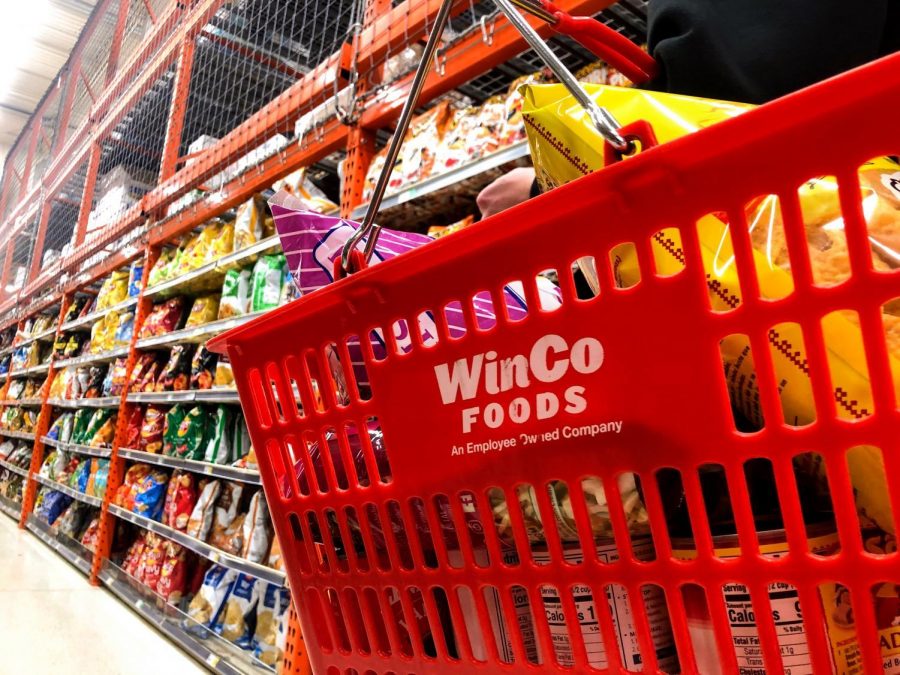Ruotolo: OSU students need affordable grocery options
March 2, 2020
While “barely surviving off of Top Ramen” is a common stereotype of college students, food insecurity is a difficult reality for many Oregon State University attendees.
Though many students prepare for college by designing their rooms and planning out their schedules, it isn’t often that meal planning and food budgeting is taught, or even on a student’s radar. This leaves the student to feel unprepared to address their food needs.
According to Joanie Pioli’s article “Addressing Food Insecurity on College Campuses,” when students are faced with over 20 hours of school work, responsibilities and expenses per week, they often see food bills as the easiest thing to cut out. Many college students then resort to skipping or shrinking meals and even, in some cases, dropping classes to save money.
Corvallis, Ore. is an interesting case when it comes to food insecurity, as it features a multitude of different grocery store options. Fred Meyer, Safeway, WinCo, Trader Joes and Grocery Outlet are just a few that Corvallis provides.
This does not automatically solve the problems at hand. Pricing, distance, variety and safety are all components that students have to consider when grocery shopping. Many students, like Logan Reck, a third-year history student, choose their shopping location simply out of convenience, rather than what is most beneficial to their diet.
“It’s actually part of the reason we chose [our] apartment complex,” Reck said. “Because Fred Meyer is basically just a quick walk to the other side…that’s all it is.”
For some, safety is an issue with the grocery stores in Corvallis. Tristan Hilbert, a third-year computer science student, said Corvallis’ Safeway and Fred Meyer locations don’t always feel the safest.
“There’s a Safeway that’s closer,” Hilbert said, “I guess it’s hard to be brave at times…I have to put on a stern face when I go to Safeway, there’s sometimes some sketchy action,” Hilbert said. “What’s really hard is when you do go to Fred Meyer, it’s high traffic…the lanes are really tight.”
Price comparison can be very important to potential shoppers, but once you factor in dietary restrictions, the prices may be too substantial for some students to afford.
At the Corvallis Safeway, a loaf of Wonderbread white bread is $3.99, but a loaf of gluten free white bread can range from $5.99 to $6.89. At Fred Meyer, Good to Dough white bread is only $0.89, but the Kroger gluten free loaf is $4.29.
The same price disparity goes for milk products. At Safeway, a Lucerne gallon of milk is $5.19, while a Lactaid 96 fluid gallon of lactose-free milk is $7.99. At Fred Meyer, a gallon of whole milk is $2.99, while a Lactaid 96 fluid gallon of lactose-free milk is $5.69.
Students with dietary restrictions or preferences, like many of OSU’s students, may struggle to continuously afford the higher prices, let alone general consistent grocery bills.
For many, WinCo is the most student-friendly store in Corvallis. Living with dietary restrictions myself, I find that WinCo’s selection of soy, rice and lactose-free milk is both large and inexpensive. Many of my OSU peers that are vegan and vegetarian choose to shop at WinCo for meat and cheese substitutions. On top of this, WinCo is one of the only 24-hour food providers in Corvallis, which is extremely convenient for a night owl like myself.
I live with the privilege of owning both a bicycle and a car, two options of transportation that many OSU students do not have. Because of this, it is easier for me to travel to WinCo on a regular basis. Many students may not have the option, and may choose another grocery locations out of mere convenience.

















































































![Newspaper clipping from February 25, 1970 in the Daily Barometer showing an article written by Bob Allen, past Barometer Editor. This article was written to spotlight both the student body’s lack of participation with student government at the time in conjunction with their class representatives response. [It’s important to note ASOSU was not structured identically to today’s standards, likely having a president on behalf of each class work together as one entity as opposed to one president representing all classes.]](https://dailybaro.orangemedianetwork.com/wp-content/uploads/2025/03/Screenshot-2025-03-12-1.00.42-PM-e1741811160853.png)























